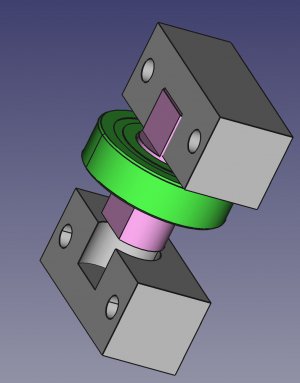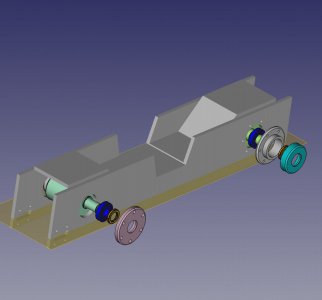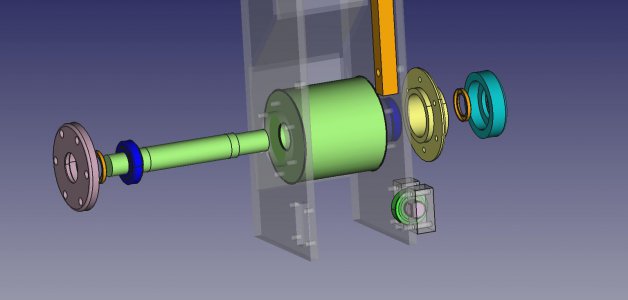Yeah, I'm just playing around in CAD while recovering from last weeks misadventures. But here's the roller assembly as currently conceived for the truck on the edge of the bridge. I threw in another copy of the truck picture for reference.
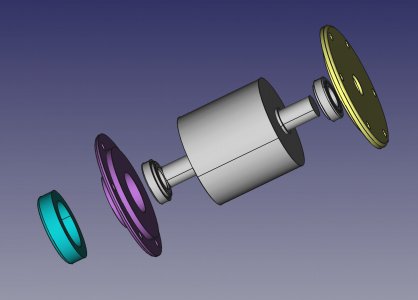
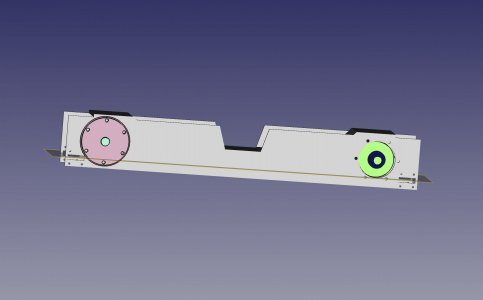
The picture on the left (or first picture depending on your window size) is the exploded diagram of the roller. I'd like to keep the roller fairly large as that minimizes the tendency of imperfections in the rail to cause catching, i.e., it rolls smoother. Using tapered roller bearings means needing adjustment to get the right preload. So the leftmost piece is essentially a fine thread nut with an internal lip to preload the bearing. (I didn't include threads in the CAD image as that creates a rendering challenge). Generally for a bearing pre-load you want fairly fine threads, much finer than the 2.25" ID of the nut would normally entail. This allows the preload to be set without having to turn the nut to sub-degree accuracy.
Lots of little features not shown, like grease fittings, etc. This is just playing with ideas.
The purple and yellow endplates are what bolt from the outside to the truck body. Note that these are intended to have an inner lip that registers in the hole in the side of the truck body, so that the load is carried by the lip, and the bolts are in tension only. Basically the bolts hold the axial force while the lip holds the radial force which is the actual weight of the lifted load plus bridge.
Since the roller is meant to be driven by the axle, it is means they are either a single piece, or they are bolted/pinned together. Or I suppose you could shrink fit the roller to the axle.
Pinning/bolting has the advantage that the roller doesn't need to fit through the side hole of the truck, it could be placed in first through the bottom, and then the axle and bearings inserted. That would reduce the hole size in the truck from ~4.5 to roughly 2.5", which matters little, but more importantly the bearing plates (purple and yellow in the first image above) could be made from smaller material, probably 4" diameter stock rather than 6", which is a significant difference in cost.


